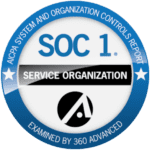In today’s interconnected world, supply chain management is more crucial than ever. For businesses aiming to maintain a competitive edge, understanding the basics of supply chain modeling is essential.
This blog post will guide you through the fundamentals of supply chain modeling, offering insights and practical tips to help you refine your business operations.
What is Supply Chain Modeling?
Supply chain modeling involves creating a digital representation of the supply chain process. Think of it as a roadmap that outlines the flow of goods from suppliers to customers. This model helps businesses optimize their operations by identifying inefficiencies and predicting potential challenges.
Importance of Supply Chain Modeling
Supply chain modeling is vital for several reasons. Firstly, it provides a clear visual of the entire supply chain, making it easier to pinpoint areas for improvement. Secondly, it allows businesses to simulate different scenarios, helping them prepare for potential disruptions. Lastly, a well-designed model can lead to cost savings and increased efficiency.
Components of a Supply Chain Model
A supply chain model includes various components such as suppliers, manufacturers, warehouses, distribution centers, and customers. Each component plays a critical role in ensuring the smooth flow of goods and information. Understanding these components is the first step toward mastering supply chain modeling.
Types of Supply Chain Models
There are several types of supply chain models, each catering to different business needs. The choice of model depends on factors like the nature of the business, customer demand, and market conditions.
Deterministic Models
Deterministic models assume that all variables are known and constant. These models are straightforward and easier to implement. However, they may not be suitable for businesses dealing with high variability in demand or supply.
Stochastic Models
Unlike deterministic models, stochastic models account for uncertainties and variability. They use probability distributions to represent different scenarios, making them ideal for businesses that experience frequent fluctuations.
Hybrid Models
Hybrid models combine elements of both deterministic and stochastic models. They offer a balanced approach, providing the simplicity of deterministic models and the flexibility of stochastic models. These models are particularly useful for large enterprises with complex supply chains.
Benefits of Supply Chain Modeling
Implementing a supply chain model offers numerous benefits. From cost savings to improved customer satisfaction, the advantages are manifold.
Cost Reduction
One of the most significant benefits of supply chain modeling is cost reduction. By identifying inefficiencies and optimizing processes, businesses can significantly lower their operational costs. This includes savings on inventory, transportation, and warehousing.
Improved Customer Satisfaction
A well-optimized supply chain ensures timely delivery of products, leading to higher customer satisfaction. Businesses can meet customer demands more effectively, resulting in increased loyalty and repeat business.
Enhanced Decision Making
Supply chain modeling provides valuable insights that aid in decision-making. Businesses can analyze different scenarios and choose the best course of action. This data-driven approach leads to more informed and strategic decisions.
Steps to Create a Supply Chain Model
Creating a supply chain model may seem daunting, but breaking it down into manageable steps can simplify the process.
Define Objectives
The first step is to define the objectives of the supply chain model. What do you aim to achieve? Whether it’s cost reduction, improved efficiency, or better customer service, having a clear objective will guide the entire modeling process.
Gather Data
Accurate data is the backbone of any supply chain model. Gather data on various aspects such as supplier performance, inventory levels, transportation costs, and customer demand. The more detailed the data, the more accurate the model.
Choose the Right Tools
There are numerous tools available for supply chain modeling, ranging from simple spreadsheets to advanced software solutions. Choose a tool that best suits your business needs and budget. Our TMS2.0 is an excellent tool for supply chain modeling.
Common Challenges in Supply Chain Modeling
While supply chain modeling offers numerous benefits, it’s not without challenges. Being aware of these challenges can help you better prepare and mitigate potential issues.
Data Accuracy
Inaccurate data can lead to flawed models and suboptimal decisions. Ensure that the data you collect is accurate and up-to-date. Regularly review and update your data to maintain the integrity of your model.
Complexity
Supply chains are inherently complex, and modeling them can be a challenging task. Break down the process into smaller, manageable steps and focus on one component at a time. This approach will make the modeling process less overwhelming.
Resistance to Change
Implementing a new supply chain model often requires changes in existing processes. Employees may resist these changes, leading to delays and inefficiencies. Communicate the benefits of the new model and provide adequate training to ensure a smooth transition.
Real-World Examples of Supply Chain Modeling
Seeing how other businesses have successfully implemented supply chain models can provide valuable insights and inspiration.
Amazon
Amazon’s supply chain is renowned for its efficiency and innovation. The company uses advanced supply chain models to manage its vast network of suppliers, warehouses, and distribution centers. This has enabled Amazon to offer fast and reliable delivery services, setting a high standard in the e-commerce industry.
Walmart
Walmart is another example of a business that has mastered supply chain modeling. The company uses sophisticated models to optimize its inventory, reduce costs, and improve customer satisfaction. Walmart’s supply chain model is a key factor behind its success as a retail giant.
Zara
Zara, a leading fashion retailer, uses supply chain modeling to stay ahead of trends. The company has a highly responsive supply chain that allows it to quickly produce and deliver new designs. This agility has helped Zara maintain its competitive edge in the fast-paced fashion industry.
Future Trends in Supply Chain Modeling
The field of supply chain modeling is constantly evolving, driven by technological advancements and changing market dynamics. Here are some trends to watch out for.
Artificial Intelligence and Machine Learning
Artificial intelligence (AI) and machine learning are revolutionizing supply chain modeling. These technologies can analyze vast amounts of data, identify patterns, and make predictions with unprecedented accuracy. This enables businesses to make more informed and proactive decisions.
Blockchain Technology
Blockchain technology offers a secure and transparent way to track transactions in the supply chain. It can enhance traceability, reduce fraud, and improve collaboration among different stakeholders. As blockchain technology matures, it is expected to play a significant role in supply chain modeling.
Sustainability
Sustainability is becoming a critical factor in supply chain management. Businesses are increasingly focusing on reducing their environmental impact and promoting ethical practices. Supply chain models that incorporate sustainability metrics can help businesses achieve their environmental goals while maintaining efficiency.
Conclusion
Supply chain modeling is a powerful tool that can significantly enhance business operations. If you’re ready to take your supply chain to the next level, start by defining your objectives, gathering accurate data, and choosing the right tools. And remember, continuous improvement is key. Regularly review and update your supply chain model to stay ahead of the competition.
Looking to Optimize Your Supply Chain?
Take the first step today and transform your supply chain modeling with a comprehensive Transportation Management System from Hatfield and Associates.
Contact Hatfield & Associates LLC today. Our team of experts is dedicated to helping you streamline your operations, minimize losses, and enhance customer satisfaction through cutting-edge logistics solutions.
With our comprehensive approach, we guide you every step of the way, from understanding your rights and responsibilities to implementing technology that drives efficiency.



